
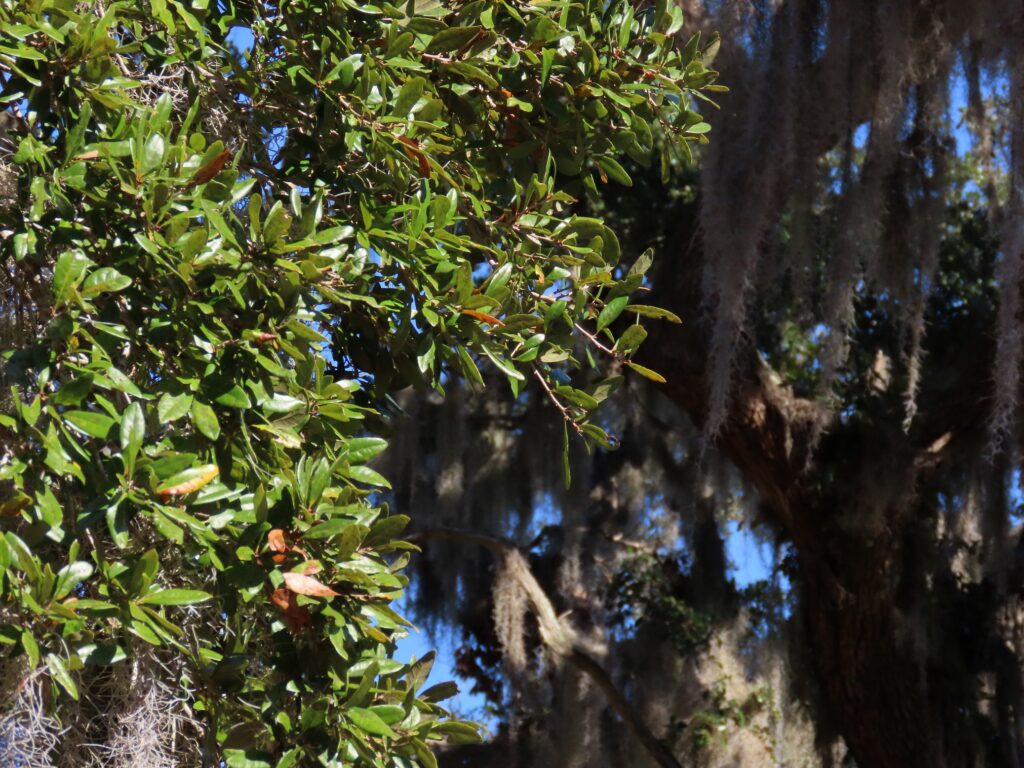
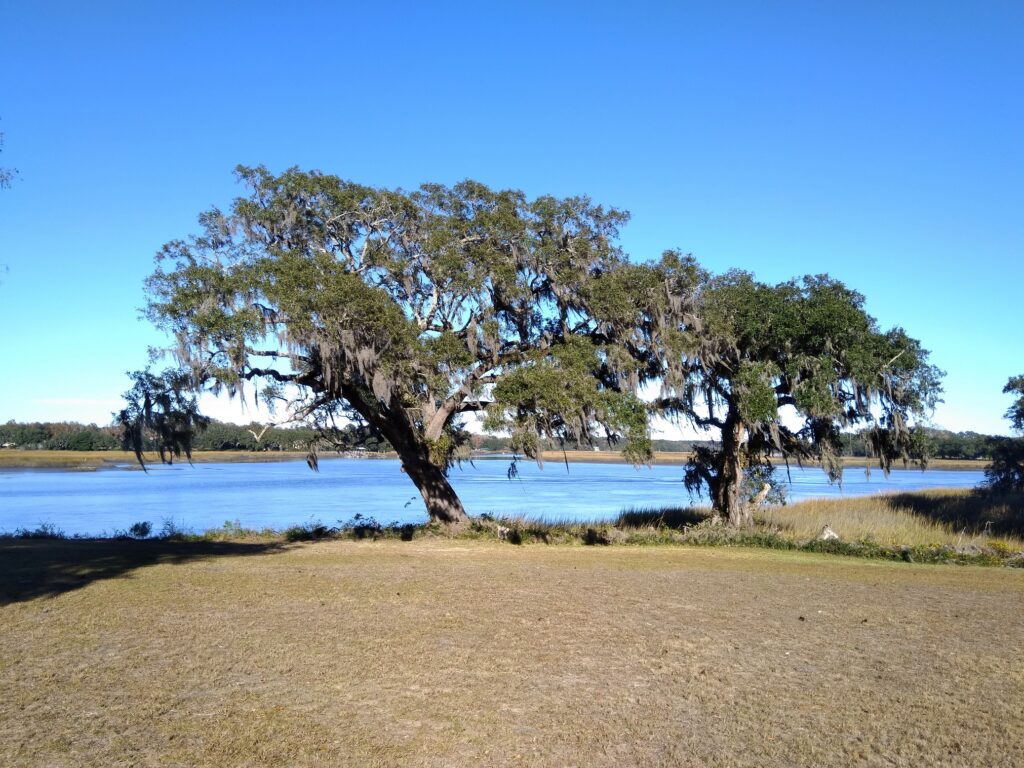
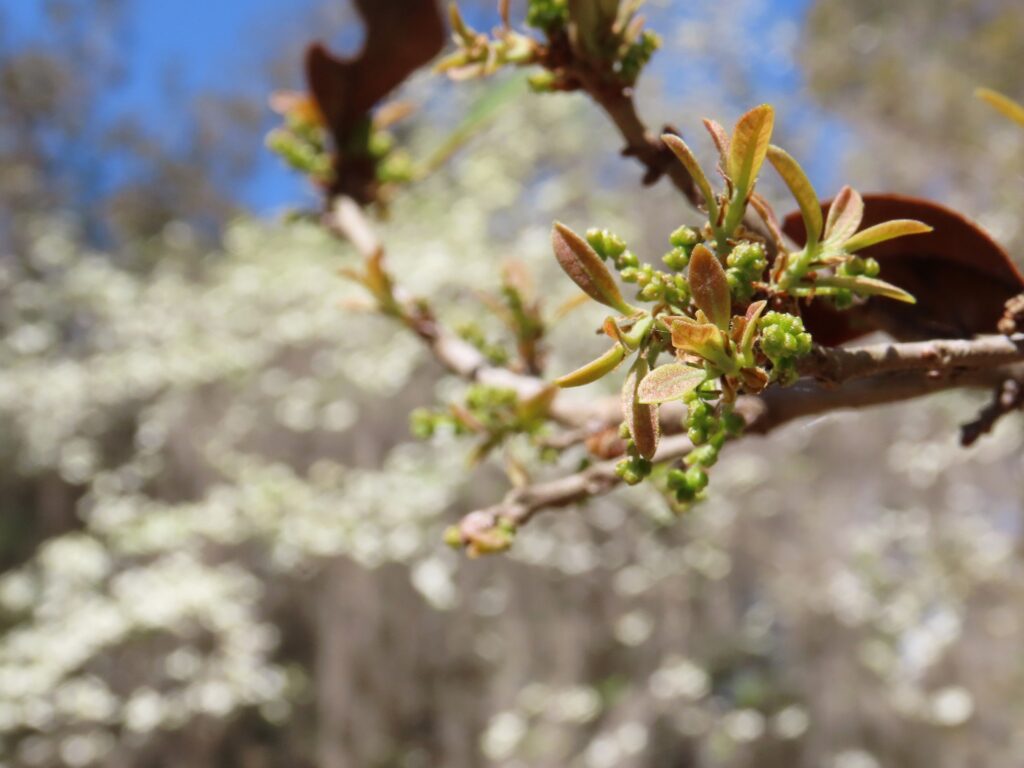
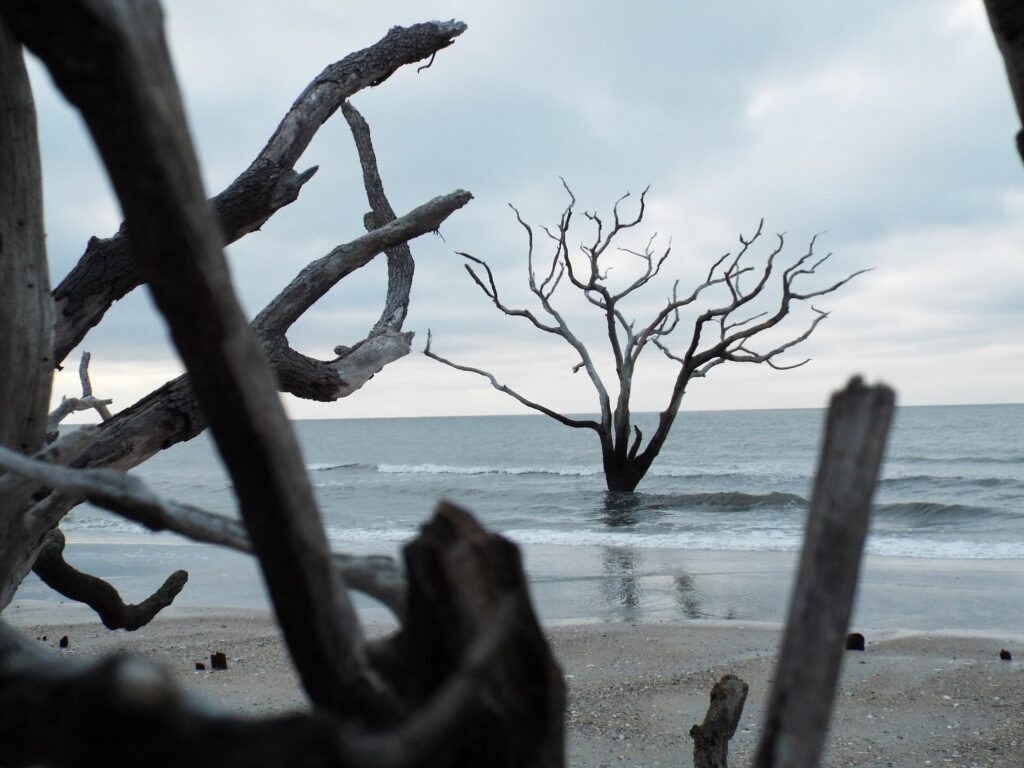
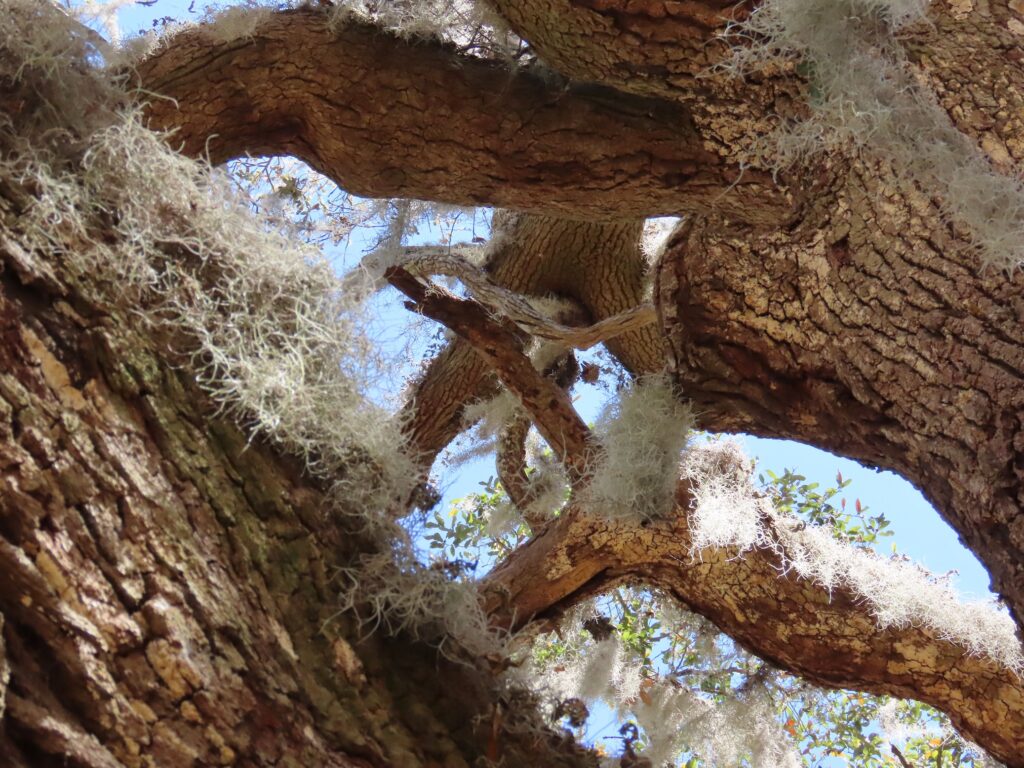
This week for Flora and Fauna Friday we have the one, the only, the irreplaceable, the Southern Live Oak (Quercus virginiana).
From the twisted boughs of scraggly hammock thickets to the sprawling ceiling of limbs around the grand multi-centennials, with trunks measured in feet rather than inches, the Live Oak is the defining organism of the Lowcountry. More than Palmettos, Shrimp, Oysters, or Spanish Moss, it is an indispensable fixture of Edisto Island. Live Oaks are massive, slow-growing hardwoods in the white oak group. Their trunks are heavy and their crown is short but exceedingly wide. Their limbs are often lumpy and gnarled in long arching spans. Their leaves are simply shaped, cupped over on their edge, leathery, and evergreen in a shade of dark inky-green shellacked with a waxy coat. Live Oaks bear sizeable acorns of a depth of brown bordering on black.
Live Oaks truly hit their stride as a tree after they break three feet in diameter. Their trunk begins to ripple and furrow over waves of coiled wood beneath. The bark thickens and fissures in great callouses of cork. Their limbs slither and spread like headwaters up a mountain as they crane and hunt for light beneath a miserly canopy. A canopy that shadows the sun and displaces the sky in a claustrophobic sarcophagus of leaves. Distended ribbons of wood bend and buckle under their own weight as branches layer upon the surrounding soil. Canyons crack and gorges gouge the walls of the Oak, peering through the ribs of the sapwood into the heartwood of a goliath. Though lightning vaporizes flesh and September gales quarter its core, our Oak brazenly flaunts its scars as badges of honor. Mere mortal wounds mean nothing more than validation to this immortal Oak.
Live Oaks grow in a wide range of habitat. From the sandhills of the midlands to the salty shores of Botany Bay. From the soggy borders of bottomlands well onto the most parching hill in the Lowcountry. They are incredibly adaptable and, save for the surf and lightning, nigh unkillable when left to their own devices. They owe much of this resiliency to their deeply extensive root system, rot-resistant wood, and dense, gnarled growth habit. These far-reaching roots let them grow as deep as they need to find water or as shallow and far away as they need to avoid water. That same elaborate root system anchors their broad canopy against hurricane force winds. That rot resistant wood is accomplished through their slow growth and sinuous vasculature, in addition to a healthy dose of resins and the like. These dense, resin saturated layers of the heartwood are difficult if not deadly for most insects and fungi to eat. Their wood’s density, in combination with its twisted shape, slows the progress of fungi and beetles within the heartwood, reducing the damage they can do. However, its overall purpose is to buy Live Oaks time to heal wounds and seal breaks. How much time? Decades if needed. Their low, sprawling growth allows them not only to maximize the amount of light they collect but also resist hurricanes. Those twisted, arching limbs have a similar utility, acting as springs that bend and flex to parry the wind rather than wholly resist it.
Just like the Longleaf Pine, the Live Oak is an ecosystem defining tree. They are the primary canopy component of our barrier islands and maritime forests. Their annual deposit of leaves enrich the soil beneath them. This mainly helps out the Live Oak but also provides needed organic matter to the soil that facilitates the growth of understory plants in barren sandy soils. They are a critical source of cover and perches for many mammals and birds. Their acorns are also a staple food of both Wild Turkey and White-tailed Deer.